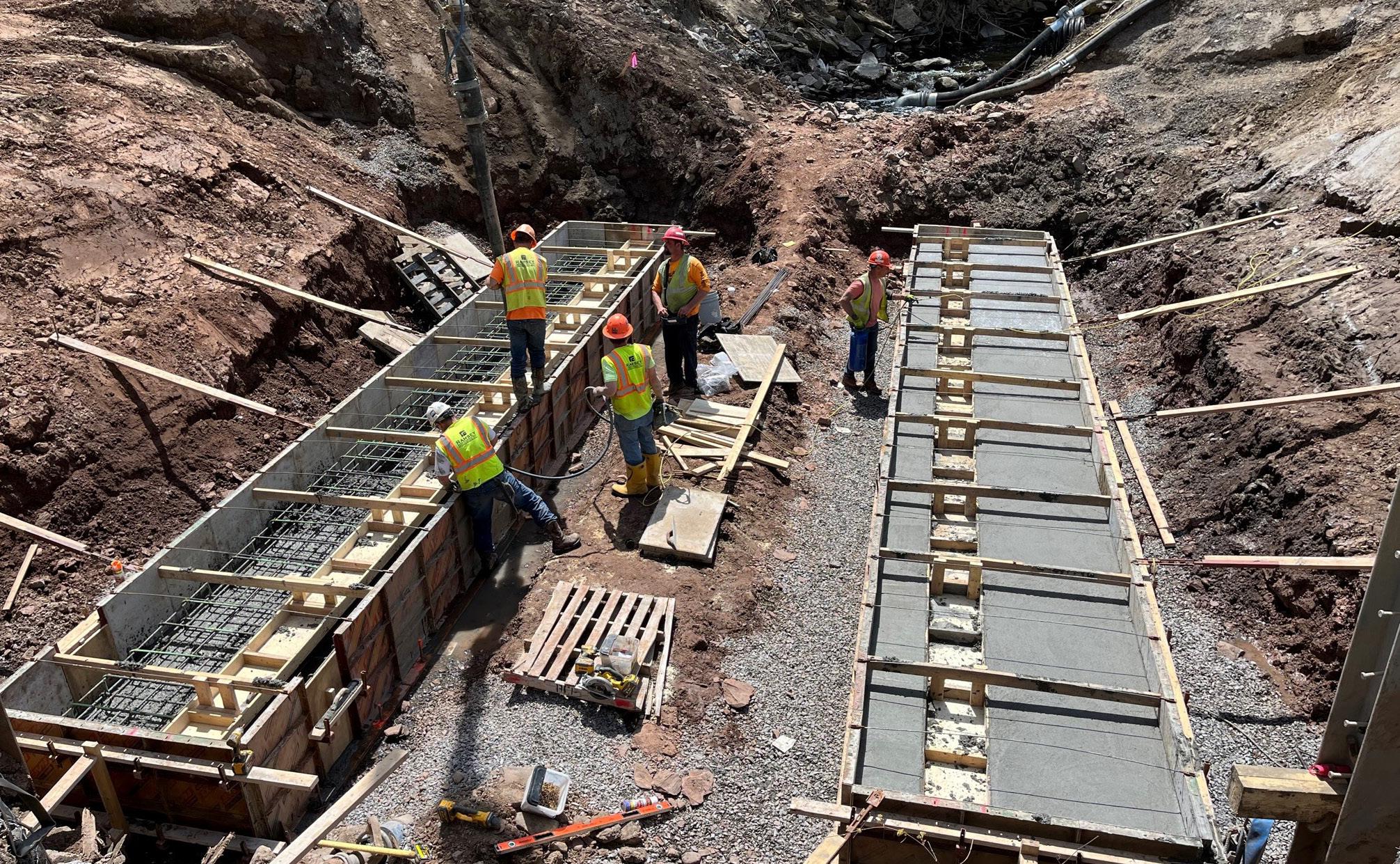
14 minute read
MILESTONES
MILESTONES
New English Road Culverts
GREECE, NEW YORK, USA
Construction of the English Road Culverts project for the Monroe County Department of Transportation in New York continues, with completion expected this fall. TYLin designed the new culverts to replace the circa-1930s originals. Throughout construction, TYLin has been using accelerated construction techniques to minimize the duration of closure for this section of roadway.
The new culverts are three-sided precast concrete units founded on spread cast-in-place footings. Concrete for the footings was recently poured and can be viewed in this time lapse video. Several private and public utilities were relocated to accommodate the new culvert and wingwalls.
TYLIN TEAM
Mark Bellavia Christine Bianchi Meaghan Capuano, PE Shawn Danek, EIT Jim Krapf, PE Xavier Major Mike Martello, PE Mike Melino, NICET IV Kaley Ostanek, NICET IV Lou Petix Tommy Siriphanthong, NICET IV Pat White
The concrete pour for the footings, recently completed for the English Road Culverts Project.

Building Demolition and Pump House Upgrades Complete at LAX
LOS ANGELES, CALIFORNIA, USA
TYLin designed upgrades to the United Airlines Hangar Pump House and the demolition of the Continental Airlines General Office (GO) Building at Los Angeles International Airport (LAX), with both projects now completed as part of the USD 58 million Secured Area Access Post (SAAP) project.
Upgrades to the 60-year-old underground pump house were necessary to maintain fire water service at the American Airlines Superbay Hangar. Demolition of its existing water source - a 1,453,000-gallon deluge tank - made way for the cross-complex Taxiway P.
A new 30-inch ductile iron pipe was installed from the pump house to the hangar, and the existing fire pumps and equipment were completely replaced. The retrofitted system now services three hangars and can output 20,000 gallons per minute (GPM) at 160 pounds per square inch gauge (PSIG). Two new pressure reducing stations were installed to protect the hangar sprinkler systems originally serviced by the pump house (FedEx and United Airlines). The GO Building has been vacant since 1982 when the parent company of United Airlines purchased a controlling interest in Continental Airlines. The project involved significant hazardous material cleanup, disconnection and demolition of a pedestrian bridge to the adjacent United Airlines Hangar Complex, rerouting of a security fence, a new secure pedestrian gate, and conversion of an internal shared wall into an exterior wall. The demolition made room for the SAAP, allowing significant access to the central airfield from the west end of LAX.
TYLin staff from our offices in Los Angeles, San Diego, Irvine, and Sacramento, California, Chicago, Illinois, and Miami, Florida, all contributed to the project, putting collaboration tools to the test. The dedication to remote and decentralized work paid off, as the project’s construction kick-off meeting was held in February of 2020. All subsequent project meetings and non-field work were subject to Los Angeles World Airports’ strict COVID-19 safety requirements, making remote work capabilities critical to the project.
New engines and fire pumps in the UA Pump House.
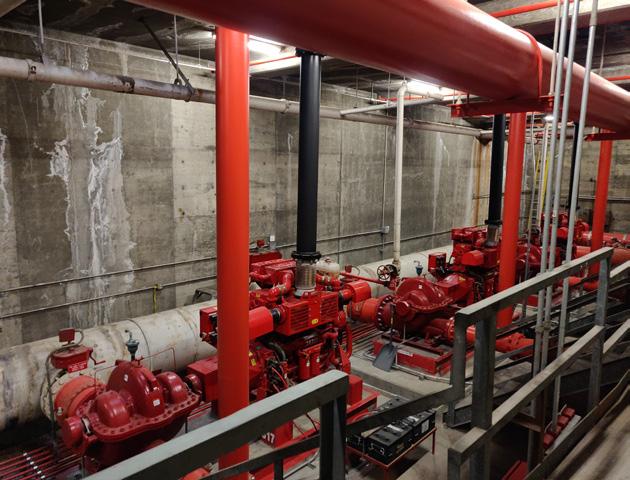
LOWERING OF THE SUSPENDED SPAN
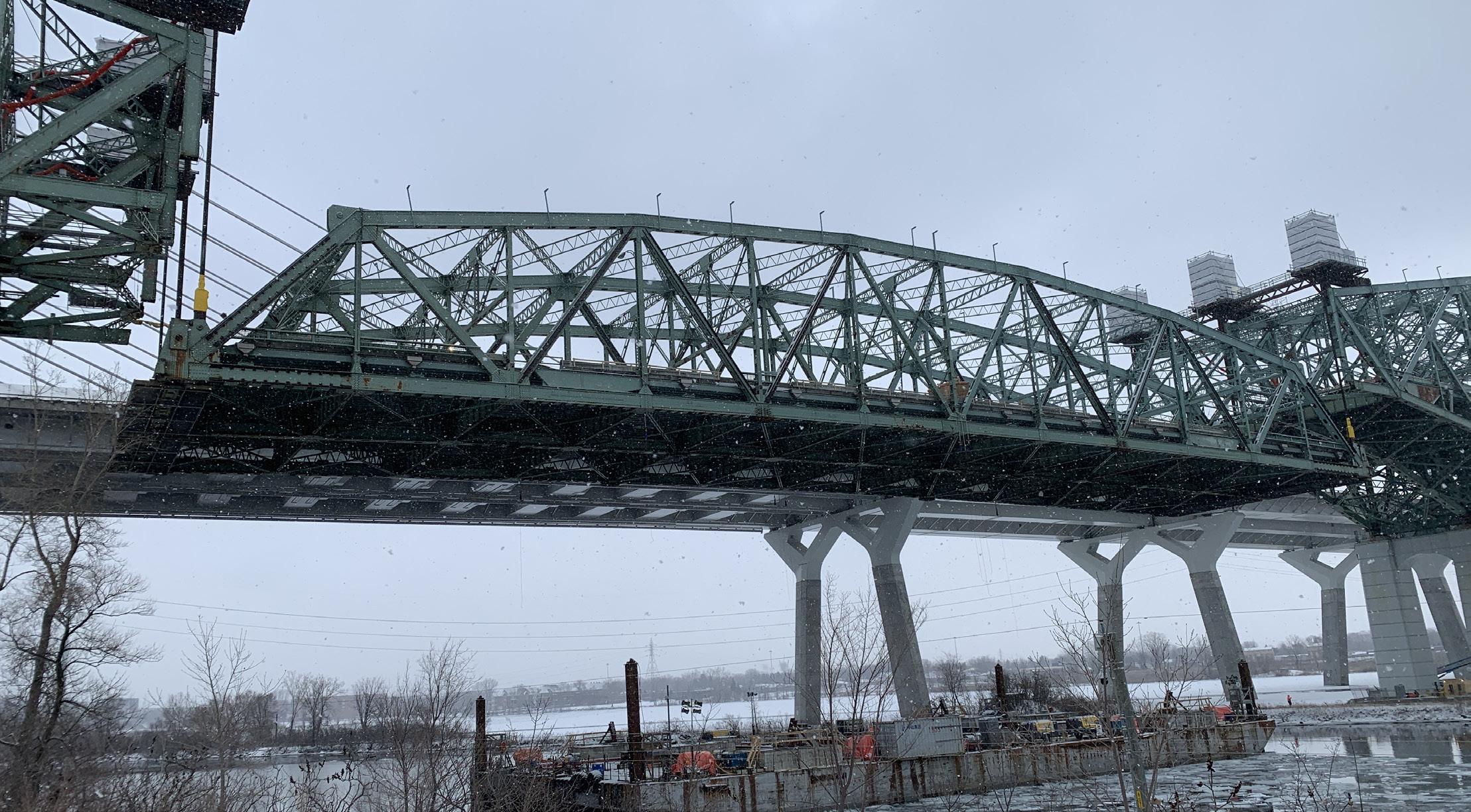
Champlain Bridge Demolition
MONTRÉAL, QUÉBEC, CANADA
On January 7, 2022 in Montréal, Québec, Canada, the 117.5-meter-long suspended span of the original Champlain Bridge main span was lowered 33 meters over the navigation channel of the St. Lawrence River onto a barge. The old bridge is owned by The Jacques Cartier and Champlain Bridges Incorporated.
The lowering was the most complex operation of the bridge deconstruction, which led by Nouvel Horizon Saint-Laurent. Prior to this procedure, TYLin designed the reinforcement of multiple members for the dismantlement operations.
The load of the 2,200-ton suspended span was transferred to the six strand jacks installed on top of the cantilever arms. The suspended span was then disconnected from the anchor spans by torch cutting the disengaged connecting members. The lowering process itself lasted 10 hours, with continuous monitoring and evaluation of the loads.
The suspended span will be dismantled later while on the barge, following a precise deconstruction sequence verified by TYLin’s engineering team.
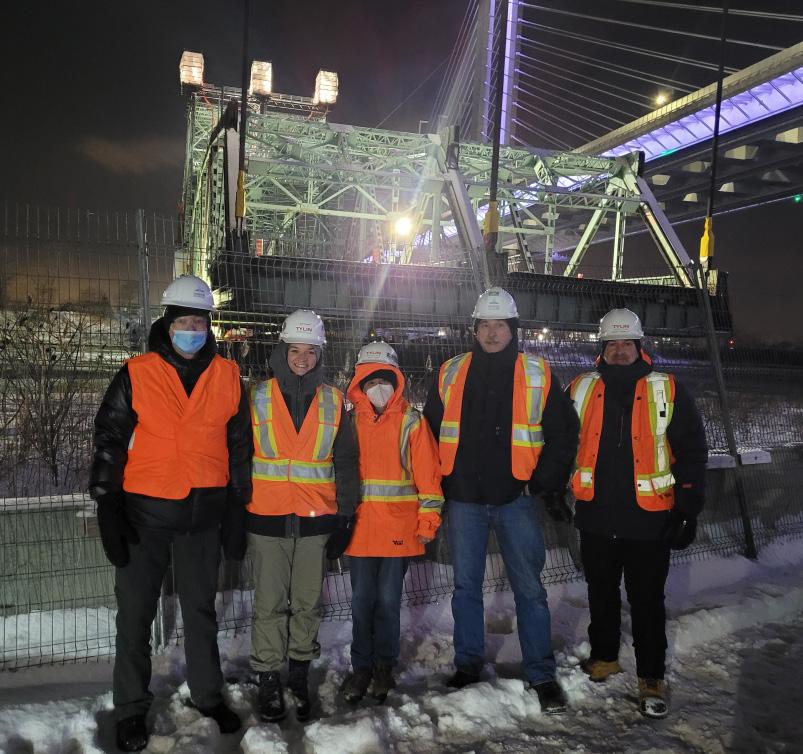
Left to right: Tim Ingham, Lucie Tabor, Hayat Tazir, George Baker, Marco Tremblay.

INSIGHTS

Raising Awareness about a Hidden Humanitarian Crisis
WORLDWIDE INITIATIVE
Design for Freedom (DFF) is an initiative that originated at Grace Farms and is rapidly gaining momentum throughout the A/E/C community in the United States and, more recently, worldwide.

Silman, A TYLin Company, was the Structural Engineer of Record for the iconic organization’s 83,000-squarefoot River Building in New Canaan, Connecticut. Through work on the campus, Silman was invited by Grace Farms founder Sharon Prince to join DFF early in its inception. Since that first meeting five years ago, DFF has grown to include over 200 industry professionals, all pushing to eradicate human slavery in the built environment, both on the construction labor and supply chain sides of the equation.

GRACE FARMS RIVER BUILDING INTERIOR
Grace Farms River Building Exterior.
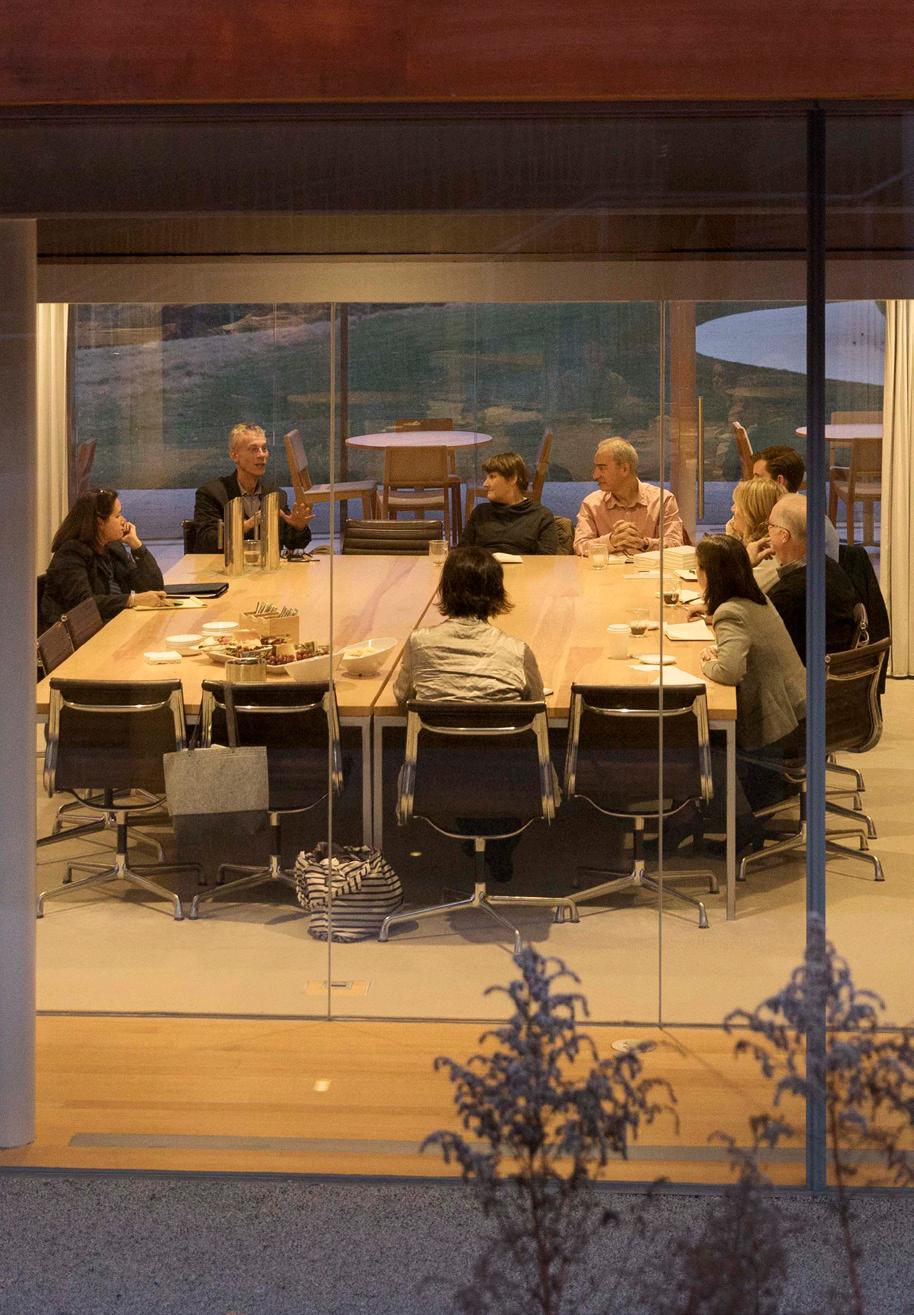
Silman’s Nat Oppenheimer (second from left) and other members of the DFF Working Group. Photo credit: Dean Kaufman Since joining TYLin, Silman has introduced other leaders from the firm’s sister companies to DFF’s important mission. For example, Meagan White, Chief Sustainability Officer at Integral Group, is now one of the members of the DFF Working Group, with others to follow.
In discussions with other members of Integral Group, it has become clear that this work fits seamlessly into the work we are all involved in on the sustainability side. Efforts include better understanding supply chain, embodied carbon, and other product metrics meshing perfectly with similar efforts on the identification of signs of human slavery.
Over time, we anticipate more involvement throughout Dar Group, our parent company - and we are hoping for a larger companywide commitment to the vision of DFF and the betterment of the world in which we all work.


Piscataqua River Bridge Rehabilitation
KITTERY, MAINE, USA
The USD 52.6 million rehabilitation of the I-95 Piscataqua River Bridge, designed by TYLin, is complete. The busiest and most important bridge in the state of Maine, the crossing is the only interstate highway connection between Maine and the rest of the country, making it vital to freight traffic, commuters, and tourists. The Maine Department of Transportation (MaineDOT) considers this structure a “Forever Bridge,” with the stated goal of keeping it in service indefinitely.
The 4,503-foot-long through-arch bridge carries six lanes of Interstate 95 and connects Portsmouth, New Hampshire, with Kittery, Maine. Along with being the first major rehabilitation of the bridge since its construction in 1972, the project brought the significant challenge of keeping traffic and commerce moving freely during construction.
Pre-pandemic, an average of 78,000 vehicles crossed the bridge each day. In the summer tourist season, daily traffic counts can rise to 130,000 or more, leading to regular traffic jams. Besides the rehabilitation, the project team was tasked with identifying a way to move more traffic through the corridor on the existing bridge. Using the shoulders as a fourth lane in each direction was the selected solution.
Working with closely with the bridge’s three owners (MaineDOT, the New Hampshire DOT, and the Maine Turnpike Authority), TYLin developed an innovative traffic control approach. After evaluating traffic levels at the site for every hour of every day of the year, the firm created an intricate, incentivized traffic control plan identifying when and where the contractor could perform the rehabilitation work with minimal traffic disruption. The project utilized movable concrete barriers that allowed lanes to be opened and closed quickly, multiple times each day, maximizing the contractor’s time to work while keeping traffic moving and ensuring safety. This novel approach had never been utilized on a project in Maine or New Hampshire. Reduced traffic due to the COVID-19 pandemic helped the traffic control approach to work flawlessly, and the project to be completed ahead of schedule.
In addition to improving safety and mobility for the next 50 years, the project widened the approach roadways and prepared the bridge for an Intelligent Transportation System (ITS) that will allow part-time shoulder use during the summer peak travel times.
Movable zipper barriers allowed bridge lanes to be opened and closed quickly to maintain traffic flow.
TYLIN TEAM
Daniel Myers, PE; Kevin Ducharme, PE; Darin Bryant, PE; Tom Errico, PE; Jeff Legere, EIT; Chris Taylor, PE; Ben Toothaker, PE; Scott Morgan; Phil McClure; Norman Baker, PE; Jack Blanchard, PE; Jim Ferguson; Patrick Bryant; Tim Kelley; Shane Amoroso; Peter Brown; and Tammie Crocker. Heath Cowan, PE, now with MaineDOT, was the TYLin Project Manager during the preliminary design.
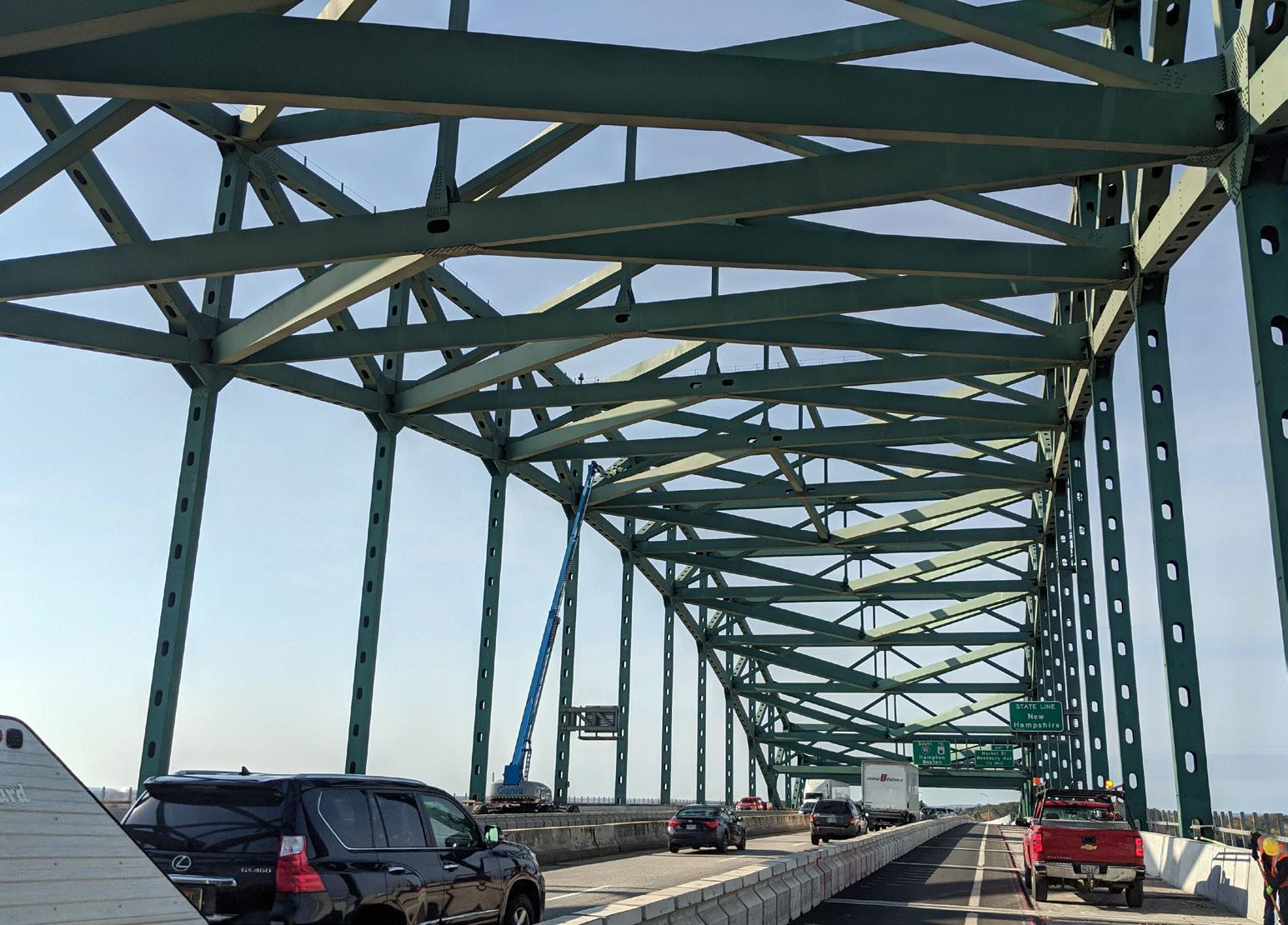
Design Alternatives Analysis for SR 37
MARIN AND SONOMA COUNTY, CALIFORNIA, USA
TYLin completed a Design Alternatives Analysis for SR 37 (Segment A) between US 101 and SR 121 in Marin and Sonoma counties in Northern California for the Metropolitan Transportation Commission (MTC). This state route is a major transportation facility linking the four northern San Francisco Bay Area counties of Marin, Sonoma, Napa, and Solano. Population distribution and commerce needs in the broader Bay Area make this an indispensable regional corridor.
However, this corridor faces critical issues, including traffic congestion, vulnerability to flooding and sea level rise (SLR), and environmentally sensitive areas. Flooding closes SR 37, which leads to traffic diversion onto alternate roadways, in turn severely affecting traffic circulation that can cause gridlock on alternate roadways. Added congestion leads to increased greenhouse gas emissions, transportation inequities, and jeopardized safety, as SR 37 is the primary west-east evacuation route for major population centers in northern Bay Area counties. MTC enlisted TYLin to lead the study for the section of SR 37 between US 101 and SR 121, covering Marin and Sonoma Counties. The alternatives had to be resilient over a projected 100-year time span, which meant understanding the dynamic context of building in the Bay Marsh lands and the implications of SLR and storm surges within a highly active earthquake zone.
TYLin structured the study to achieve the following objectives:
— Develop a draft purpose and needs statement on which to base the development and screening of alternatives. — Engage key stakeholders and regulatory agencies in the development and analysis process. — Engage federal agency oversight as represented by the California Department of Transportation (Caltrans), acting on behalf of Federal Highway
Administration. — Develop a full range of alternatives. — Evaluate and screen alternatives using evaluation criteria that represent the environmental, community, and economic objectives. — Engage public input at key milestones. — Make the documentation accessible for public review and comment. TYLin organized a series of stakeholder workshops where the alternatives analysis process could be developed in collaboration. As a result, the stakeholders were able to understand the engineering and other factors that differentiated the alternatives. Caltrans is undergoing a study for the entire corridor, so TYLin’s information and data is carried forward into that study.
For the interview, TYLin proposed a Planning and Environmental Linkage (PEL) evaluation for our portion of the corridor. Because of this suggestion, Caltrans decided to apply the PEL process in the study of the entire SR 37 corridor. The PEL will be the first of such studies in California, establishing a new path for narrowing alternatives for future projects.
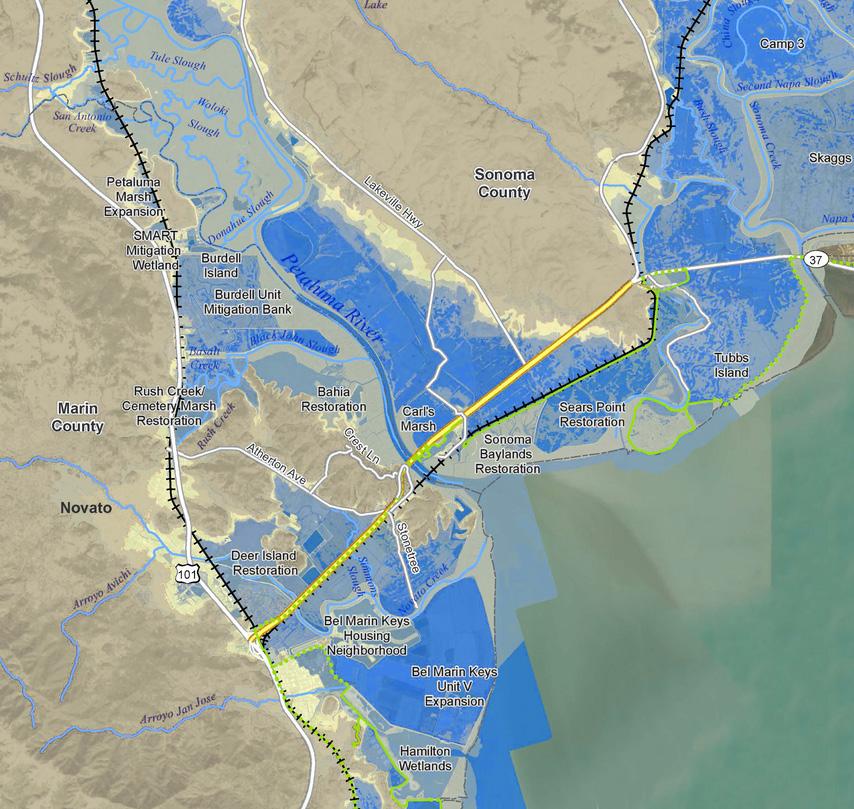
Map of SR 37 corridor.

China’s Jiangsu Garden Expo
NANJING, CHINA
The 11th Jiangsu Garden Expo, designed with the theme “Beautiful Jiangsu · Ecological Valley,” is in the Jiangning District, Nanjing, China. The first phase of the project covers an area of about 345 hectares (853 acres) in the Qinglong Mountain, Huanglong Mountain, and Baohu Mountain ecological corridor and greenway network.
TYLin provided consultancy services for preliminary project planning and preparation and served as the lead engineering, procurement, and construction (EPC) team for the municipal garden and all smart technology components at the Garden Expo site.
Emerging technologies played an essential role in the development. TYLin and the project team fully utilized intelligent construction technologies (ICT), artificial intelligence, the Internet of Things, Building Information Modeling (BIM), and Computer-Integrated Manufacturing (CIM) for the planning, construction, and operations of the park.
The site’s history includes an upsurge in mining operations during the 1950s, with piles of slag left behind and exposed cliffs scarring the landscape. The project’s extensive development stage started with nine abandoned mines of varying depths, huge quarries, abandoned cement plants, and 40,000 square meters of muck and mire. The first phase of the Jiangsu Garden Expo project took three years and brought together the efforts of numerous academicians and experts. As a result, the project made full use of the topography with new and renovated buildings, an expansive layout, green plants that now cover 2,540,000 square meters – and by creatively incorporating industrial relics into new garden landscapes.
For example, the “Suyun Valley” garden features classical Jiangsu characteristics. The introduction of a green ecosystem into 1100-meter-long, 22-meter-deep mines created the “Cloud Dream Valley,” which blends the promise of the future with local cultural elements. The remaining portions of the cement plants became the “Time Art Valley.” Quarrying sites were reconstructed as the “Flower Valley along the Cliff,’ with a cliff face that descends close to 100 meters and a water feature over 40 meters deep.
Today, more than 40 cement silos and over a dozen cement-plant facilities have been transformed into bookstores, museums, and art galleries. There is also a new cliff theater and a hotel constructed from a former mine.
In the future, Jiangsu Garden Expo will continue integrating ecological concepts with commercial development to provide a unique cultural, creative, and connective experience that is “always open and never ending.”



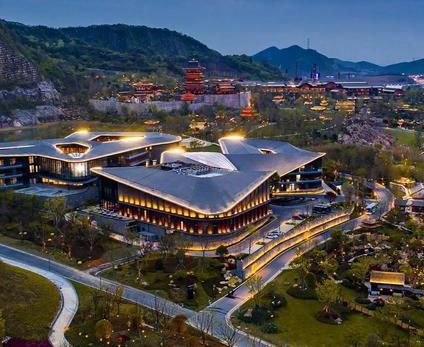

I-15 French Valley Parkway Improvements Phase II
TEMECULA, CALIFORNIA, USA
TYLin has completed the design of the Interstate 15 (I-15) French Valley Parkway improvements Phase II project in the City of Temecula, California. Services included an environmental re-evaluation and developing the plans, specifications, and estimate (PS&E), including the design of a two-lane, northbound collector-distributor (CD) road system along I-15, bridge widenings, and a special retaining wall south of the I-15/I-215 connector.
The project will ultimately improve congestion, operations, and access within the community, and is part of a three-phase project. Phase I is completed and Phase III is planned for the near future.
With TYLin’ s support, this USD 102 million project was the only one in the nation to receive a USD 50 million grant from the Infrastructure for Rebuilding America (INFRA) program. Securing this money was contingent upon obtaining timely approvals on the design and right-of-way. The tireless efforts of the TYLin team resulted in obtaining approvals from the Federal Highway Administration, California Department of Transportation, and resources agencies in a record three-month period.
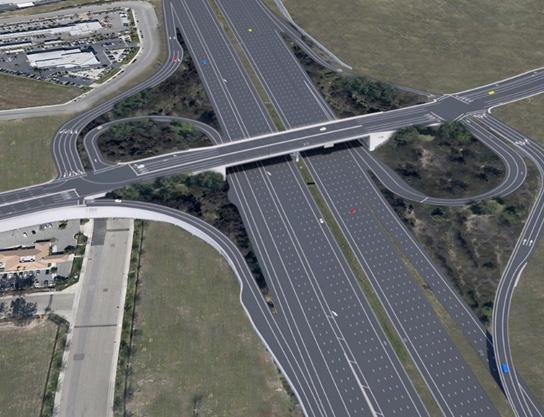
Future phase III new interchange construction for the French Valley Parkway project.
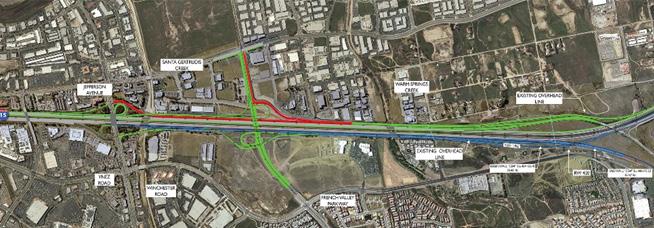
ENRICO FERMI DRIVE OVERCROSSING OVER SR 11, CALIFORNIA’S SECOND DDI
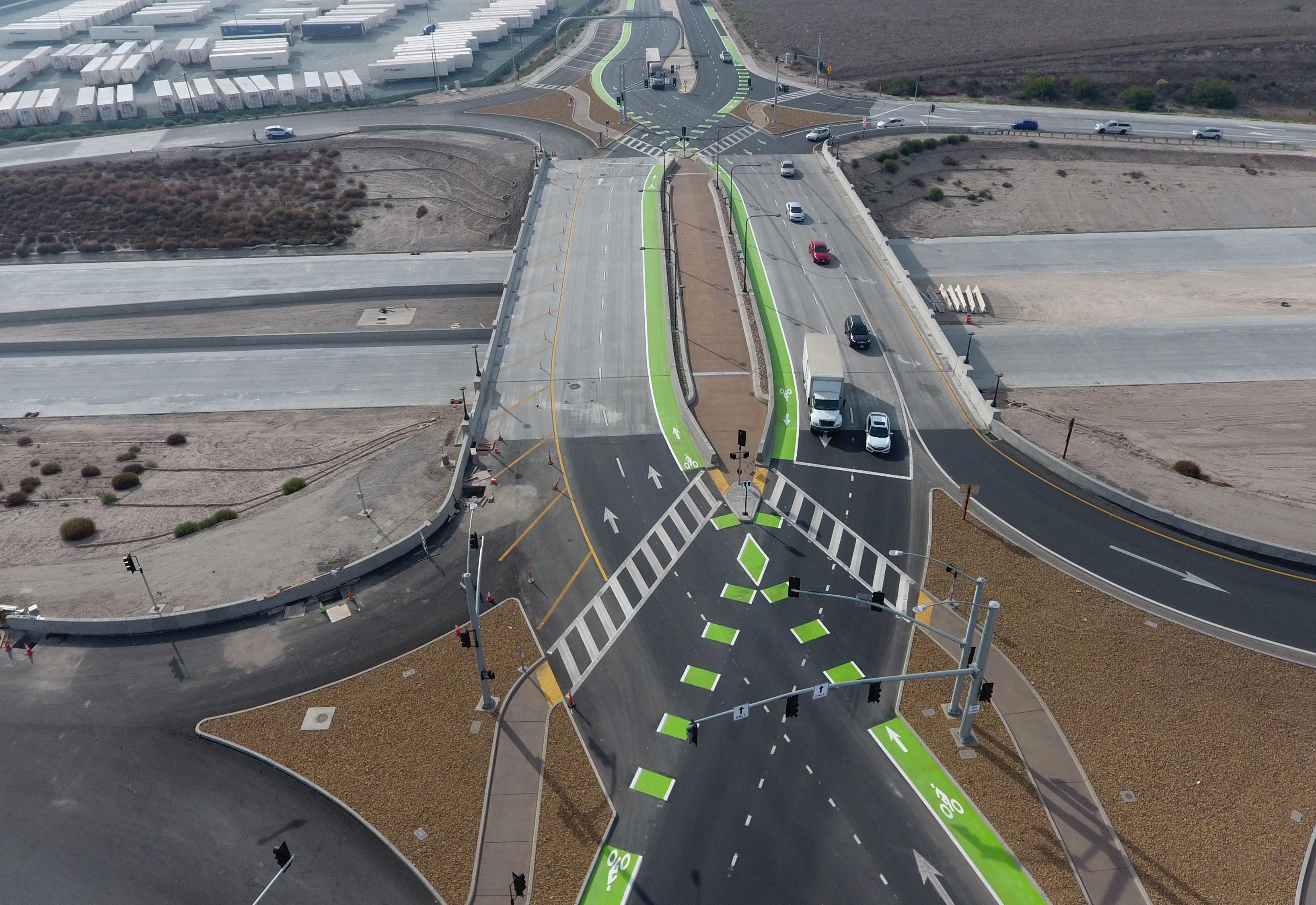
SAN DIEGO COUNTY, CALIFORNIA, USA
The SR 905/SR 125/SR 11 Interchange and SR 11 East projects in San Diego, California, were completed in May 2022. The projects are a critical part of the infrastructure system to help ease border congestion and goods movement between the United States and Mexico.
The interchange is now fully open to traffic, along with the Enrico Fermi Road Overcrossing, which is the second diverging diamond interchange (DDI) in California.
TYLin’s Wade Durant has served as the Structure Representative for the California Department of Transportation (Caltrans) on these two projects. Together, they totaled USD 130 million in construction costs, including the construction of seven bridges and eight retaining walls.

New connector ramps at the SR 905/SR 125/SR 11 interchange.



